Introduction to Inverter Generators
Power generation has evolved significantly, and inverter generators are at the forefront of this advancement. Unlike traditional generators, which operate at a constant speed regardless of demand, inverter generators offer greater efficiency, quieter operation, and safer power for sensitive electronics.
For those seeking portable, reliable, and fuel-efficient power, inverter generators provide a modern solution for camping, RVs, job sites, and home backup energy needs. This guide explores how inverter generators work, their technical advantages, and why they are becoming the preferred choice for many users.
What Is an Inverter Generator?
An inverter generator is a type of generator that produces electricity using a three-phase process:
- AC power generation – Similar to a conventional generator, it first produces alternating current (AC) electricity.
- AC to DC conversion – The AC power is converted into direct current (DC), allowing better control over voltage and frequency.
- DC to AC inversion – The generator then inverts the power back to AC, producing a stable, clean sine wave output.
This “clean” power output is free from voltage spikes and fluctuations, making inverter generators ideal for sensitive electronics like laptops, smartphones, and medical devices.
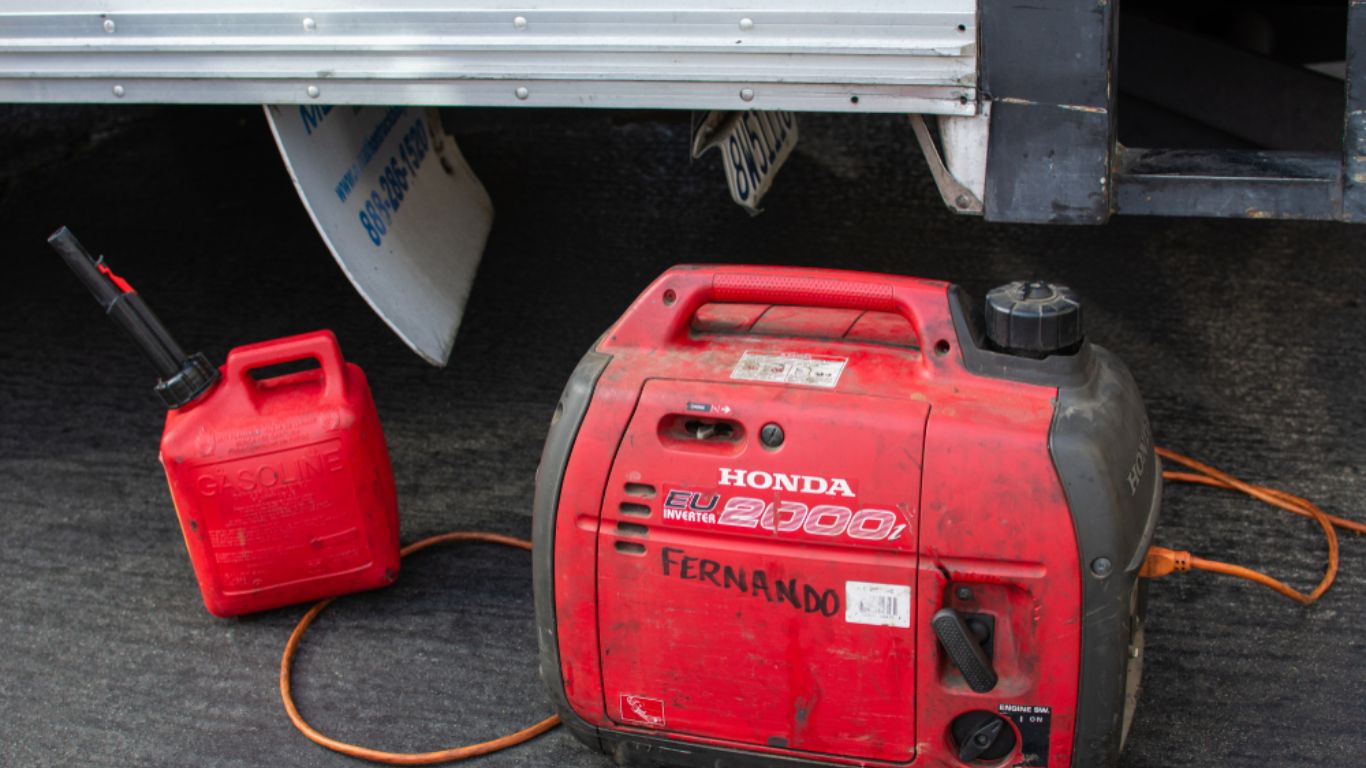
Some Terms Explained
Understanding key terms related to inverter generators helps clarify their benefits:
- Alternating Current (AC) – The type of electricity supplied by power grids and most generators.
- Direct Current (DC) – Electricity that flows in a single direction, used in battery-powered devices.
- Sine Wave – A smooth, continuous waveform that represents high-quality electricity.
- Fuel Efficiency – The ability to adjust engine speed based on power demand, reducing fuel consumption.
- Noise Reduction – The process of minimizing operational noise through engine modulation.
These features distinguish inverter generators from traditional models, making them a superior choice for quiet, efficient, and stable power supply.
How Does an Inverter Generator Work?
An inverter generator operates by dynamically adjusting its engine speed to match power demand. Unlike conventional generators, which run at a fixed speed (typically 3,600 RPM), inverter generators slow down or speed up depending on the load.
For example:
- Running a small phone charger? The engine idles at a lower speed, conserving fuel.
- Powering a refrigerator or multiple devices? The engine increases output to meet demand.
This ability to modulate engine speed significantly improves fuel efficiency, reduces emissions, and lowers noise levels compared to traditional generators.

Technical Aspects of Inverter Generators
Inverter generators incorporate advanced technology that enhances efficiency, power stability, and environmental friendliness. Several key technical aspects contribute to their superior performance:
Power Output and Efficiency
One of the standout features of inverter generators is their ability to adjust engine speed based on power demand. Unlike traditional generators, which run at a fixed 3,600 RPM, inverter generators slow down or speed up as needed.
- Lower power demand → The engine runs at a reduced speed, conserving fuel.
- Higher power demand → The engine increases speed, delivering necessary power output.
This adaptive mechanism minimizes fuel consumption, reduces emissions, and extends engine life, making inverter generators an economical and eco-friendly power solution.
Technology Behind Inverter Generators
At the core of an inverter generator is a microprocessor-controlled inverter module that manages the power conversion process. The inverter:
- Converts DC power into a clean AC sine wave with minimal distortion.
- Ensures power output is as stable as grid electricity, preventing voltage spikes.
- Regulates power frequency to protect sensitive devices like laptops, smartphones, and medical equipment.
By utilizing this advanced microprocessor technology, inverter generators provide consistent, high-quality electricity for both household and outdoor applications.

Advantages in Fuel Efficiency and Noise Reduction
Inverter generators stand out for their ability to deliver power efficiently while keeping noise levels low.
- Fuel Efficiency – By running at variable speeds, inverter generators consume less fuel compared to traditional generators, making them a cost-effective power solution.
- Noise Reduction – The ability to throttle engine speed significantly reduces noise levels, making inverter generators ideal for use in campsites, residential areas, and events where quiet operation is important.
How Does an Inverter Work with a Generator?
The inverter component plays a crucial role in ensuring clean and stable electricity output:
- Initial Power Generation – The generator produces raw AC power.
- Conversion to DC – The electricity is converted into DC power for stabilization.
- Final Inversion to AC – The power is then inverted back to smooth, consistent AC power with minimal distortion.
This process acts like a filtration system, removing fluctuations and inconsistencies that can damage electronics. Traditional generators, by contrast, often produce irregular power spikes, which can harm sensitive devices.
With cleaner, quieter, and more fuel-efficient performance, inverter generators provide a modern, reliable power source for various applications.
What’s the Difference Between a Generator, Inverter, and Inverter Generator?
Generators and inverters both provide electricity, but they achieve this in distinct ways. An inverter generator combines elements of both, delivering stable power with added efficiency. Understanding these differences is key to choosing the right power solution.
Generator vs. Inverter
A generator typically runs on gasoline or diesel and produces alternating current (AC). It maintains a constant engine speed and is useful for large power demands. However, traditional generators can be heavy, noisy, and less efficient when running smaller loads.
An inverter, on its own, does not generate electricity. It takes direct current (DC) from batteries, solar panels, or other sources, then converts it to AC power. Inverters are often part of renewable energy setups or backup power systems where stored energy in batteries is converted into usable electricity for household devices.
Traditional Generator vs. Inverter Generator
A traditional generator delivers AC power directly from its mechanical rotation, typically at a set 3,600 RPM. While this approach works for many applications, it can produce irregular voltage and frequency, making it less suitable for sensitive electronics. The constant, high-speed operation also leads to increased noise and higher fuel consumption.
An inverter generator refines the process. It first converts AC power to DC, then inverts it back to AC. This produces a clean sine wave with minimal fluctuation. Because it can adjust engine speed based on load, an inverter generator runs more efficiently, uses less fuel, and generates less noise. This makes it ideal for environments where quiet operation and stable power output are essential.
Is an Inverter Generator Right for You? Practical Uses and Applications
An inverter generator stands out for its fuel efficiency, quiet operation, and consistent power output, making it an excellent choice in various scenarios.
For the Home
- Inverter generators provide a steady stream of clean electricity during a power outage.
- Sensitive devices such as laptops, medical equipment, and home entertainment systems benefit from the stable voltage and frequency.
- The reduced noise also makes them more agreeable for residential use, as they run quietly in comparison to standard generators.
For Camping and Caravanning
- Quiet operation and portability are essential for outdoor adventures.
- The compact, lightweight design of inverter generators, along with their lower noise levels, keeps campsites serene.
- At the same time, travelers can run small appliances and charge electronics without worrying about power fluctuations. This combination of mobility and reliability makes them particularly attractive for RV enthusiasts and campers.
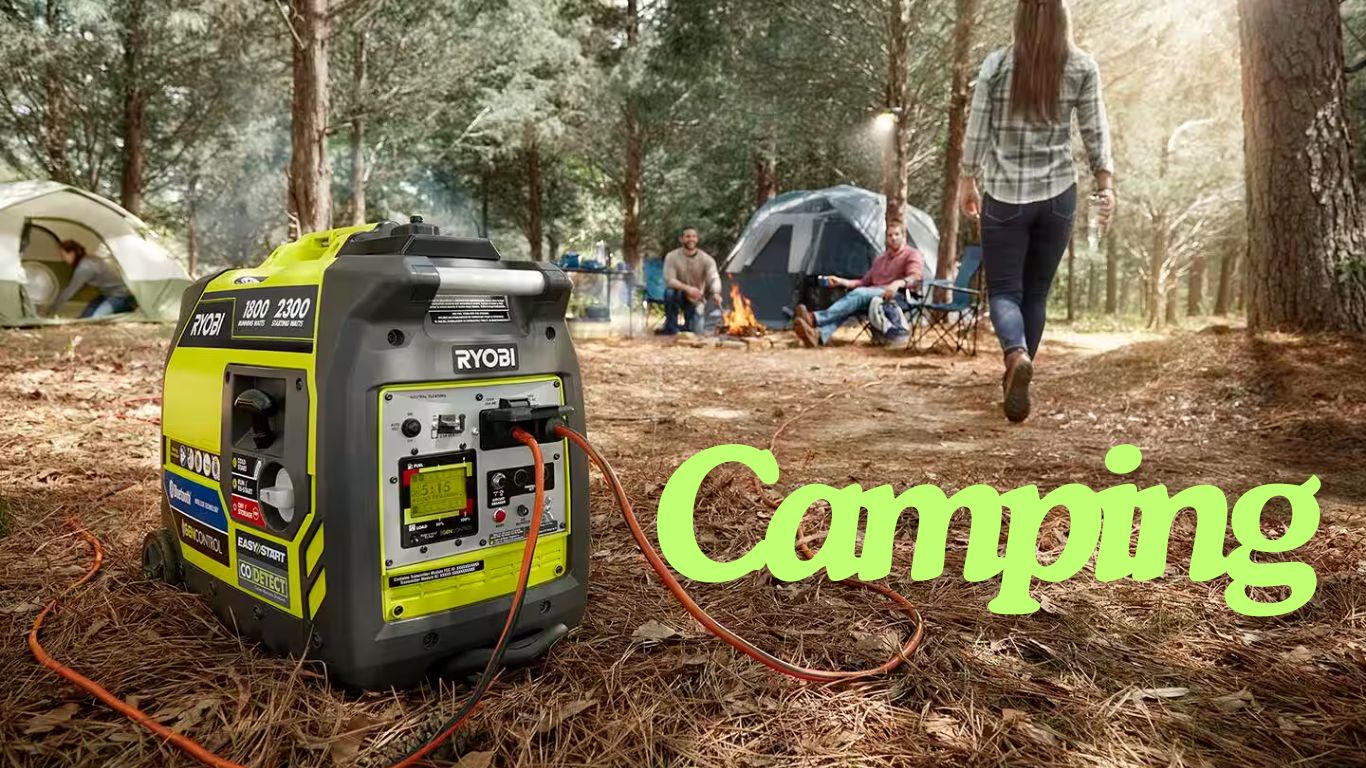
Backup Power for Small Businesses
- Small businesses often rely on sensitive electronic devices such as point-of-sale systems, computers, or specialized equipment.
- An inverter generator’s clean power output reduces the risk of damage or downtime.
- Fuel efficiency helps control operational costs, and the quieter operation is beneficial in customer-facing environments like cafes, pop-up stands, or mobile service stations.
Inverter Generator for Mobile Detailing
- Mobile car detailing services require a power source that is both portable and capable of running pressure washers, vacuums, and polishers.
- An inverter generator meets these needs by delivering steady power with minimal noise, ensuring work can be done without disturbing clients or drawing negative attention.
- Fuel efficiency further supports businesses on the move, as it reduces the frequency of refueling.
Technical Considerations for Choosing an Inverter Generator
Fuel Efficiency
Fuel efficiency is a critical factor when selecting an inverter generator. Unlike conventional generators, which run at a fixed speed, inverter generators can automatically adjust engine speed to match the load.
This adaptability reduces fuel consumption, lowers operational costs, and minimizes emissions. A more fuel-efficient unit is especially beneficial for extended power outages, camping trips, or mobile services where refueling opportunities may be limited.
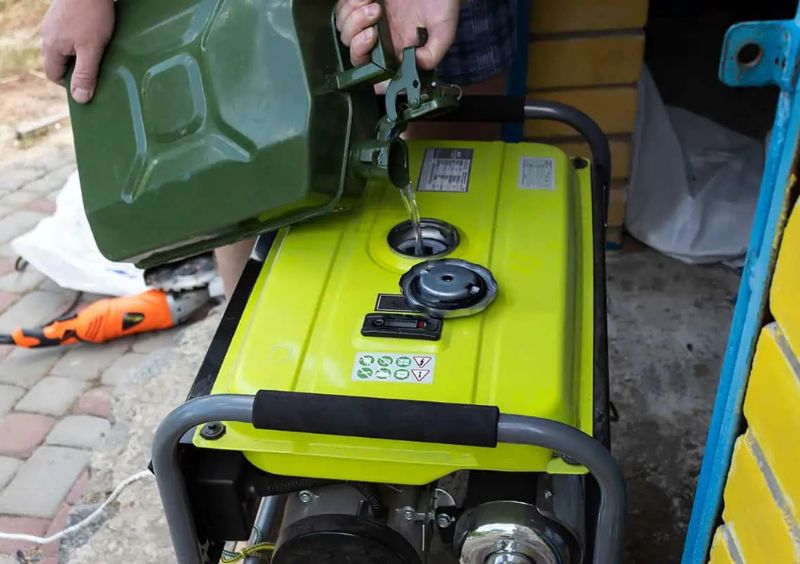
Output and Power Capacity
Before purchasing an inverter generator, determine the wattage requirements of the devices or appliances it will run. Common household items such as refrigerators, air conditioners, and microwaves have different power needs. Having a generator with sufficient output capacity ensures there is no strain on the system.
Overloading an inverter generator can lead to performance issues or even damage the unit and connected devices. Checking appliance wattage and selecting a generator that slightly exceeds these requirements helps maintain optimal performance.
Noise Level
Noise pollution can be a significant concern in residential areas, campsites, or outdoor events. Inverter generators are designed for quieter operation compared to traditional generators.
Many models operate at decibel levels low enough to meet local noise regulations. When comparing models, look for manufacturers’ noise level ratings (often measured at 25% load). Choosing a generator with a lower decibel rating enhances user comfort and prevents disturbances to neighbors or fellow campers.
Parallel Capability
Some inverter generators offer parallel capability, allowing two identical units to be connected for increased total output. This feature is particularly useful for users who need extra power on occasion but also value portability and fuel efficiency during periods of lighter use.
Parallel kits typically include the necessary cables and connectors. When this feature is available, it provides a flexible way to expand power capacity without investing in a larger, heavier generator.
How to Size an Inverter Generator
Sizing an inverter generator involves calculating the total wattage needed at any given time. Consider both running wattage (for normal operation) and starting wattage (for devices like refrigerators or air conditioners that draw a surge of power when they start).
Add a margin for safety—opting for a generator that can handle slightly more than the expected load. This approach prevents overload, maintains stable power delivery, and extends the generator’s lifespan.
How to Choose the Right Inverter Generator for Your Needs
Selecting the right inverter generator hinges on balancing practical features and budget.
- Start by noting each device’s wattage requirement, ensuring the generator can handle the total load.
- Next, weigh additional features such as parallel capability or special noise reduction technologies. A higher initial investment in an efficient, durable inverter generator often pays off in reduced fuel costs and longer service life.
- Finally, consider portability: a lightweight, compact generator can be easily transported, benefiting users who frequently move between sites or enjoy outdoor activities.
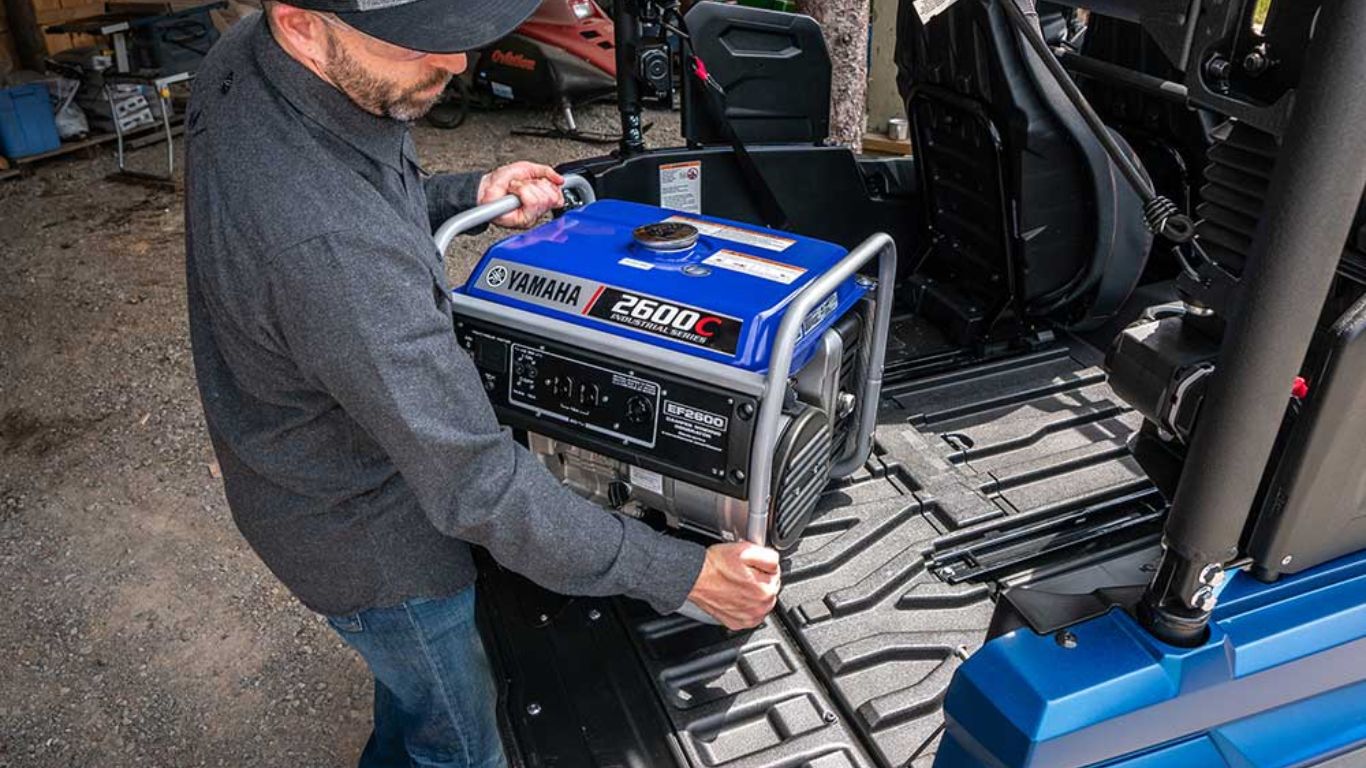
How to Use an Inverter Generator Safely
Proper usage not only extends the life of an inverter generator but also ensures personal and property safety.
How to Connect an Inverter Generator to Your House
- Use a Transfer Switch: For seamless integration into a home’s electrical system, a transfer switch is essential. It isolates select circuits and prevents backfeeding, which can pose a serious risk to utility workers.
- Check Local Regulations: Certain regions have specific rules about generator hookups. Confirm that the installation meets local codes.
- Professional Installation: Although some homeowners handle this themselves, hiring a licensed electrician ensures a safe, compliant setup.
Can Inverter Generators Be Used Indoors?
No. Inverter generators must always be operated outdoors. Like any combustion engine, an inverter generator produces carbon monoxide (CO), an odorless and potentially lethal gas. Running a generator inside a house, garage, or enclosed space can rapidly increase CO levels, posing a severe health hazard. Even near-open windows or partially enclosed areas can be unsafe. Keep the generator well-ventilated and away from living areas to ensure user safety.
Maintaining and following these safety measures allows for a secure, efficient experience when using an inverter generator. It delivers clean, reliable power for various needs—ranging from backup electricity during outages to on-the-go power for outdoor adventures—while minimizing risks to both users and the surrounding environment.
Is an Inverter Generator Worth the Investment?
Determining whether an inverter generator is a worthwhile purchase often depends on individual priorities. There are notable advantages that make these generators appealing:
- Fuel Efficiency: Inverter generators regulate engine speed according to the electrical load. By adjusting output to match demand, they use only the fuel required, potentially saving a significant amount of money over time.
- Portability: Their compact design and lighter weight allow easy transport for camping trips, RV usage, or as backup power at home.
- Quiet Operation: Inverter models are generally much quieter than traditional generators. This reduction in noise is especially beneficial for residential areas and outdoor settings where tranquility is a priority.
However, there are also some disadvantages to weigh:
- Higher Upfront Cost: The initial price of an inverter generator tends to be more expensive compared to a conventional generator.
- Size Limitations: Inverter generators may not be well-suited for heavy-duty tasks or large-scale power requirements. Many models are designed for moderate loads rather than industrial-level demands.
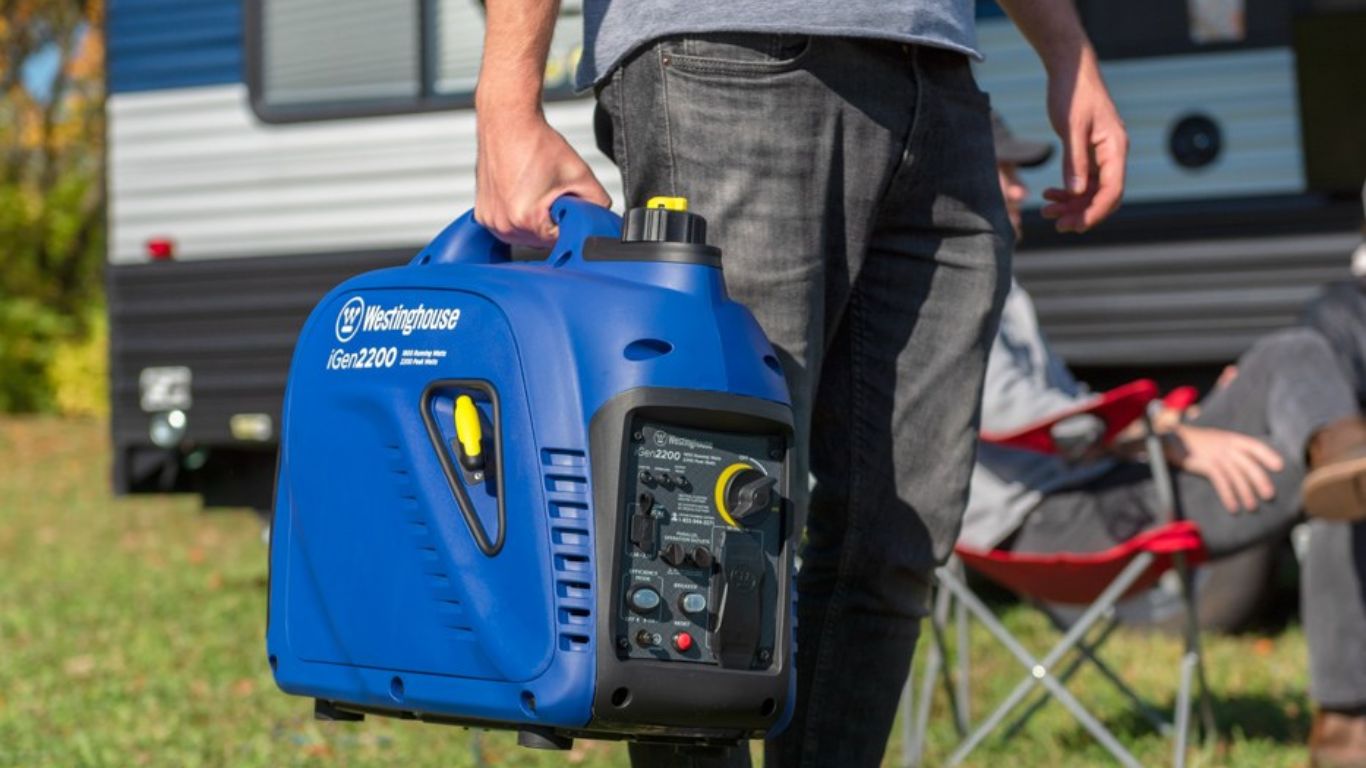
Read more at: Pros and Cons of Inverter Generators
Inverter Generator for Mobile Detailing
- Benefits for Mobile Detailing Businesses: Inverter generators are crucial for mobile detailing, providing a reliable power source at various locations. Their quiet operation ensures minimal disturbance, making them ideal for use in residential or commercial areas where noise might be a concern. Their clean power output also protects sensitive electronic equipment commonly used in detailing operations.
- Recommended Features for Detailing: When choosing an inverter generator for mobile detailing, key features include portability, fuel efficiency, and output stability. A generator that offers quick startup, easy maintenance, and can handle multiple power tools simultaneously is highly beneficial.
- Case Studies or Examples: Successful mobile detailing businesses often share stories of how inverter generators have supported their growth and efficiency. For instance, a mobile detailer might detail how switching to an inverter generator increased their service radius due to its portability or how the quiet operation allowed them to extend working hours without violating local noise regulations.

Inverter generators are more than just tools; they invest in business efficiency and customer satisfaction. These generators help mobile detailing businesses shine in a competitive market by ensuring operations can continue smoothly and quietly anywhere.
Frequently Asked Questions
Here are some common questions about inverter generators:
1. What’s the difference between inverter generators and regular generators?
Inverter generators produce cleaner, more stable power by converting DC to AC electronically, making them ideal for sensitive electronics. Regular generators typically have larger power fluctuations and lower efficiency.
2. How do I safely operate an inverter generator?
Perform regular maintenance checks, provide proper ventilation to avoid overheating, follow the manufacturer’s fuel guidelines, and know your model’s capacity and safety features to reduce accidents.
3. Can I use an inverter generator to power my detailing equipment?
Yes. Inverter generators provide stable power for sensitive electronic tools like polishers and vacuums. Match your equipment’s wattage requirements to the generator’s output for the best performance.
Conclusion
Inverter generators provide clean power, fuel efficiency, and portability, making them ideal for mobile detailing. Their ability to deliver stable electricity ensures safe operation for sensitive equipment. Investing in an inverter generator enhances efficiency, reduces costs, and improves overall business performance. For mobile detailers, this is a smart and reliable power solution.
Marion Woods is an accomplished generator technology expert with over 15 years of experience, currently serving as the Chief Technology Officer at GenTech Power Solutions. She holds a Master’s degree from MIT and specializes in enhancing generator efficiency and integrating renewable energy sources. Marion is a respected author and speaker in the engineering community, dedicated to pioneering sustainable power solutions.
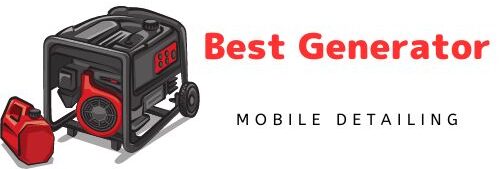

15 thoughts on “What is an Inverter Generators?”